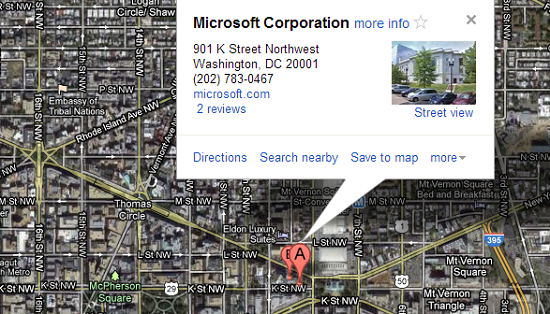If you have a Windows Phone-based device, and you happened to be using Google Maps through Internet Explorer on your phone, then you probably got caught up in a pretty interesting back-and-forth. An unexpected one at that. I’d be willing to bet that even if you don’t have a Windows Phone, you heard about Google’s and Microsoft’s
recent situation. While it might be easy to point fingers, and to place blame where you think it is justly deserved, I think we should take some time and look at it from start to “finish.”
So, where to start. I guess we should start before yesterday, because it’s important for the story. Before yesterday, apparently Windows Phone users could access Google Maps through their built-in Browser, better known as Internet Explorer. I say apparently because I can honestly say that I never tried. I didn’t even think to try it, in fact. That’s mostly because Windows Phone has a great Maps application on board, out of the box. But, I can understand people wanting to use Google’s mapping services, no matter how they gain access to it.
We need to take a detour here for a moment. The reason before yesterday is important is because people could access Google Maps through Internet Explorer on their Windows Phone, but there was some serious confusion when everything started happening. It seemed that the majority of people were confused about Internet Explorer’s ability to access Google Maps. I genuinely thought that the majority of people had no idea it worked, which made it easier to just go with the flow. To report it as such.
That seems odd to me.
The next piece of the puzzle comes from Google. Seemingly in response to reports suggesting that Google’s Maps never worked in the non-WebKit-based internet Explorer, the Mountain View company corroborated this information by
releasing this statement to Gizmodo:
“The mobile web version of Google Maps is optimized for WebKit browsers such as Chrome and Safari. However, since Internet Explorer is not a WebKit browser, Windows Phone devices are not able to access Google Maps for the mobile web.”
Now, this doesn’t make any sense. If you’ll remember, people were using Google Maps via Internet Explorer on their Windows Phone, apparently just fine. (Some functionality was missing, yes, and we’ll get to that. But, it worked.) Now we have the creator of Google Maps telling us that Google Maps not only doesn’t work in Internet Explorer, but that it never did. Okay, so if we’re taking Google’s word for it, then that’s the end of the story.
I doubt everyone, and there were so many people, saying they could access Google Maps through Internet Explorer were wrong, though. That makes even less sense, to be honest.
Now, let’s not forget Microsoft’s statement, courtesy of Gizmodo’s updated story! Here’s what the company had to say to Google:
“Internet Explorer in Windows Phone 8 and Windows 8 use the same rendering engine.”
All righty. So, before Google’s statement, the general belief is that the company is blocking Windows Phone users from accessing Google Maps via their device. Indeed, that’s how it looks. But then you look at Google’s statement, and the whole situation just gets confusing. It’s messy, actually.
“As a result, we chose to continue to redirect IE mobile users to Google.com where they could at least make local searches.”
All right, so Google now confirms the rumor mill: They are redirecting Windows Phone users, and blaming performance. We know that most companies want to create the best user experience possible, so it isn’t impossible to believe that Google really is redirecting users because they believe the experience isn’t up to par.
Unfortunately, I’m not sure how anyone could take that seriously at this point. First impressions matter, and unfortunately Google’s first foray into the situation was, apparently, misleading. Was the hope that people that had been able to access Google Maps through Internet Explorer on their Windows Phone would just slap their foreheads and say, “Oh, you’re right! I was imagining the whole thing!”
Is it a coincidence that the relationship between Microsoft and Google has been put under the microscope due to the latter’s removal of Exchange ActiveSync, and Microsoft’s claim that Google is
actively blocking the company from creating a full-featured YouTube application for Windows Phone? It doesn’t look like everything is going so smoothly between the two companies, and unfortunately it looks like the user is starting to be included in the mess more and more.
And that’s the real issue. No, Google doesn’t have to support Internet Explore on Windows Phone. They don’t. It wouldn’t be hard to imagine that, considering both Google’s Chrome and Apple’s Safari (both WebKit-based Browsers) garner the majority of Web-based traffic on mobile devices, Google is putting more effort into supporting those Browsers, and not putting too much focus on smaller presences.
The problem is the fact that the end user, the consumer, is feeling the effects from these decisions, and these statements. As I said above, the situation is messy, and it doesn’t look like these singular situations are going to be the only ones we experience moving forward. All we can hope is that the next major rift between two large companies don’t burn the consumer so directly.
